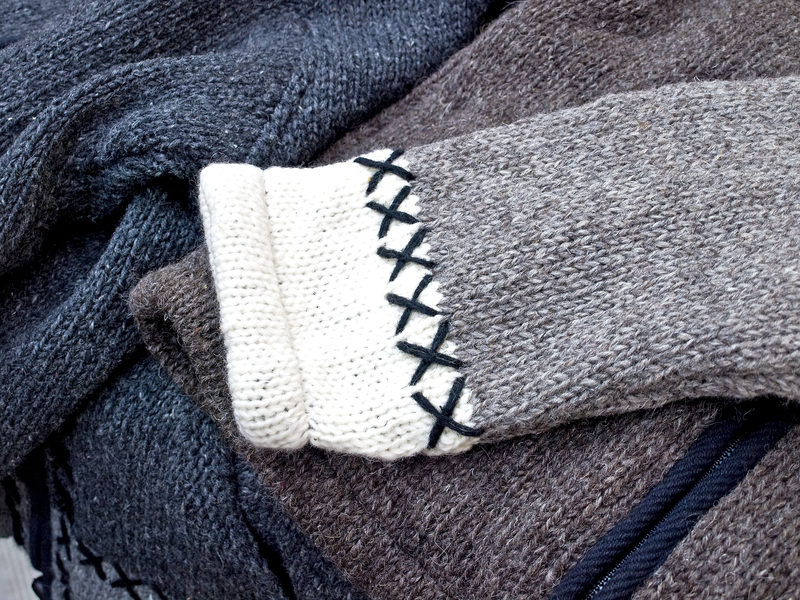Upcycle for a Greener World: Tips for Repurposing Discarded Items
In today's age of rampant consumption and ever-growing waste streams, finding eco-friendly ways to curb our environmental impact is essential. Upcycling--the creative process of transforming discarded items into valuable products--has emerged as a powerful solution. Not only does upcycling reduce landfill waste, it also conserves resources, inspires creativity, and fosters a greener, more sustainable world.
What is Upcycling and Why is it Important?
Upcycling, sometimes known as creative reuse, involves taking materials or products that are no longer needed or destined for disposal and giving them a new purpose. Unlike recycling, which breaks down materials for remanufacturing, upcycling preserves the original item's integrity and often increases its value through creativity, craftsmanship, and ingenuity. This unique approach is a crucial element of sustainable living.
- Reduces landfill waste: By keeping items in use longer, upcycling reduces the volume of waste ending up in landfills.
- Conserves resources: Minimizes the need for raw materials, energy, and water used in the production of new items.
- Sparks innovation: Upcycling encourages inventive thinking and original design, often resulting in unique and beautiful pieces.
- Supports a circular economy: Keeps goods and materials circulating within the production and consumption cycle, reducing the need for constant manufacturing.
Key Differences: Upcycling vs. Recycling
While both upcycling and recycling aim to reduce waste, their processes and outcomes are different:
- Recycling breaks materials down to their raw state and creates new products, often requiring significant energy and resources.
- Upcycling repurposes existing items as-is or with minimal processing, typically consuming fewer resources and producing a product of equal or greater value.

Why Repurpose Discarded Items?
*Repurposing*--finding a new use for items you'd otherwise throw away--is a core aspect of upcycling. Developing a habit of repurposing helps in fostering sustainable habits at home or in your workplace, significantly contributing to a greener planet.
- Environmentally Responsible: Repurposing maximizes the functional life of products, and cuts down on pollution and energy use.
- Economical: Making new products out of old ones saves you money.
- Personalized Style: Upcycled items can be tailored to your unique tastes.
- Community Impact: Repurposing can bring communities together through workshops and group initiatives.
How to Start Upcycling: Easy Steps for Beginners
Ready to upcycle for a greener world? You don't need to be a professional crafter--anyone can get involved with upcycling using these simple steps.
Step 1: Rethink Your Trash
Before you throw anything away, ask yourself: "Can this be used differently?" Everyday household items, from glass jars to worn-out clothes, may hold surprising potential. Keep a separate "upcycle bin" for possible projects.
Step 2: Gather Basic Tools & Materials
- Scissors and cutting tools
- Glue, tape, or adhesives
- Paints, markers, and decorative materials
- Needle and thread, or a small sewing machine
- Sandpaper, nails, and a hammer
Step 3: Get Inspired
Browse websites, social media platforms, or visit local markets for upcycling ideas. Pinterest and Instagram offer endless creative projects for repurposing discarded items.
Creative Upcycling Ideas: Give New Life to Old Items
The possibilities for upcycling are endless. Here are some of the most popular and effective ways you can repurpose discarded objects:
Household Upcycling Projects
- Glass Jars and Bottles: Clean and decorate them to use as vases, candle holders, pantry containers, or gift jars.
- Old T-Shirts and Clothes: Cut and sew them into shopping bags, cushion covers, cleaning cloths, or rag rugs.
- Wooden Pallets: Transform pallets into coffee tables, bookshelves, garden planters, or even outdoor furniture.
- Tin Cans: Paint and repurpose cans as pencil holders, planters, candle molds, or bird feeders.
- Broken Dishes: Use pieces for mosaic art, garden stones, or jewelry.
- Cardboard Boxes: Build storage organizers, children's playhouses, or pet shelters.
Outdoor Upcycling Projects
- Old Tires: Paint and use them for outdoor planters, garden swings, or sandbox edging.
- Bicycle Parts: Convert rims into garden trellises, wind chimes, or quirky wall art.
- Plastic Bottles: Turn into self-watering plant pots, bird feeders, or vertical gardens.
Environmentally Friendly Upcycling Tips
To maximize the environmental benefits of repurposing discarded items, keep these best practices in mind:
- Choose Non-Toxic Materials: When painting or gluing, pick *eco-friendly*, low-VOC, water-based paints and adhesives.
- Upcycle Locally: Use materials you already have, or source from local buy-nothing or swap groups to reduce the transport footprint.
- Collaborate and Share: Join community upcycling groups or workshops to share skills, ideas, and resources.
- Repair Before You Toss: Sometimes an item only needs a simple fix to gain new life--repairing is a form of upcycling!
- Think Beyond the Home: Encourage schools, businesses, and community centers to establish upcycling programs.
Benefits of Upcycling for Sustainability
The impact of upcycling and repurposing *waste materials* goes far beyond your personal space. Here's how it shapes a greener world:
- Reduces Resource Extraction: Less demand for new materials means fewer forests cut down, less mining, and reduced energy use.
- Cuts Greenhouse Gas Emissions: Upcycling uses less energy than manufacturing new products, helping combat climate change.
- Encourages Sustainable Consumption: Adopting an upcycling mindset shifts our culture away from throwaway habits.
- Community Empowerment: Upcycling initiatives spark engagement, creativity, and skill-sharing within local communities.
- Supports Local Economies: Many upcycled goods are sold through small businesses and artisans, boosting local entrepreneurship.
Successful Real-Life Upcycling Stories
To showcase the power and creativity of upcycling, here are a few inspiring real-world examples:
- TerraCycle: This global company partners with brands to collect and upcycle hard-to-recycle waste--everything from chip bags to shampoo bottles--into benches, bags, and building materials.
- Upcycled Wood Furniture: Artisans worldwide rescue wood from demolished buildings to create stunning tables, shelving, and decor.
- Eco-Bricks: Communities in Africa and South America fill plastic bottles with non-recyclable waste, using them as building blocks for schools and homes.
- Fashion Revolution: Designers are using old denim, fabric scraps, and vintage clothing to craft high-fashion, eco-friendly collections.
Advanced Upcycling: For the Committed Eco-Enthusiast
Once you've gained confidence in basic upcycling techniques, try challenging yourself with more involved projects. For example:
- Electronics: Salvage circuit boards and old tech for art, jewelry, or even functional gadgets.
- Furniture Reinvention: Breathe new life into outdated furniture through reupholstery, painting, or hybrid redesigns.
- Multi-Material Upcycles: Combine various materials--metal, glass, fabrics, wood--for truly one-of-a-kind creations.
Upcycling for a Greener World in Education
Integrating repurposing discarded items into educational settings, from early childhood through university, imbues the next generation with the skills and values needed for sustainability. Encourage kids to use upcycled supplies for science projects, art, and design thinking challenges.
Upcycling and the Circular Economy
At the heart of modern sustainability is the concept of the circular economy: a system where resources are reused, repaired, refurbished, and recycled, reducing waste as much as possible. Upcycling discarded items is a key pillar of this model, as it keeps products and materials circulating for as long as possible.
- Design for Longevity: Choose and create products that are built to last and easy to upcycle.
- Reduce Planned Obsolescence: Support companies that embrace circularity and sustainable design.
- Share What You Learn: Helping neighbors and friends discover the joy and value of upcycling amplifies its impact.

How to Encourage Others to Upcycle for a Greener World
Once you have seen the benefits of upcycling in your own life, inspire others to join the movement:
- Host Workshops: Local workshops or online webinars are great for sharing tips and techniques.
- Start an Upcycling Challenge: Engage your community to compete in creative upcycling contests.
- Share Your Projects: Post before-and-after photos on social media to spread awareness.
- Gift Upcycled Items: Handmade gifts with personal touches carry special meaning and inspire recipients.
- Support Upcycling Businesses: Shop from local artisans and upcycled product brands.
Conclusion: Upcycle Today for a Greener Tomorrow
Upcycling for a greener world is a practical, inspiring, and accessible way to reduce waste, protect natural resources, and enhance your daily life. Whether you are a creative DIY-er, an eco-conscious consumer, or a passionate educator, upcycling is a powerful tool for environmental stewardship and personal expression.
So next time you stand over your recycling bin or trash can, pause and ask: "What could this become?" A simple shift in mindset might just spark the next upcycling revolution--one unique and sustainable creation at a time.
